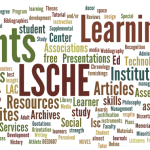Learners & Learner Assessment

Learner Assessment Resources
With every mistake, we must surely be learning.
Learner assessment is an important part of a learning support system. Students are often evaluated both by the institution and by the learning support center. Institutional assessment seems more concerned with predicting academic success and with placement in English, math, and developmental skills courses. Learning Support Center assessment, however, is concerned with learning skills and strategies, learning styles, and student competency in reading, math, critical thinking, and writing so as to assist students to develop increased proficiency in these areas. This resource looks at both institutional and learning support center assessment with relevant citations and reviews and a list of testing and survey instruments:
"Practical Assessment, Research & Evaluation (PARE) is an on-line journal providing access to refereed articles that can have a positive impact on assessment, research, and evaluation." https://scholarworks.umass.edu/pare/
Assessment website at the University of Connecticut: https://assessment.uconn.edu Note: Site is under revision and relevant pages have been removed. Unknown when this will be revised.
Angelo, T. A. (1999, May). “Doing assessment as if learning matters most.” [Original paper AAHE Bulletin].
Baird, L. L. (Ed.). (1977). Assessing student academic and social progress. New Directions For Community Colleges No. 18. San Francisco: Jossey Bass. https://eric.ed.gov/?q=ED140900
Baker, R. W., & Schultz, K. L. (1992). Measuring expectations about college adjustment. NACADA Journal, 12(2), 23-32.
Baker, R. W., & Siryk, B. (1986). Exploratory intervention with a scale measuring adjustment to college. Journal of Counseling Psychology, 33, 31-38.
Barefield, T. T., Kesler, S., & Kalivoda, K. (2016). Testing Accommodations Reference Manual. Association on Higher Education and Disability (AHEAD). https://www.ahead.org/professional-resources/publications/publications-for-sale
Biggs, J.B. (1993). What do inventories of students’ learning processes really measure? A theoretical review and a clarification. British Journal of Educational Psychology, 63, 3-19.
Biggs, John. (1996). Assessing learning quality: Reconciling institutional, staff and educational demands. Assessment & Evaluation in Higher Education, 21(1 ), 5-15.
Castelli, C. and De Johnson. (1984). Learning center assessment: Managing for change in the 80’s. In D. R. Fleming (Ed.), Proceedings of the seventeenth annual Western College Reading Association (pp. 30-42).
Clowes, D. (1981). Evaluation methodologies for learning assistance programs. In C. C. Walvekar (Ed.) Assessment of learning assistance services. New Directions for College Learning Assistance. 17-32. Jossey-Bass.
Clymer, C. (1978). A national survey of learning assistance evaluation: Rationale, techniques, problems. In G. Enright (Ed.), Learning assistance–Charting our course. Eleventh annual proceedings of the Western College Reading Association (pp. 21-30).
Coda-Messerle, M. (1973). “Data Collection: A Cybernetic Aspect of a Learning Assistance Center” in G. Kerstiens (Ed. ), Technological alternatives in learning: Sixth Annual Proceedings of the Western College Reading Association (pp. 51-58). https://eric.ed.gov/?q=ED080947
Dawson, S. J., Nold, D. M., and Griego, O.D. (2003). Developing a computerized study skills placement test: Lessons learned and recommendations for further study. Research in Developmental Education, 18(2).
Earnheart, N. M. (1972). Evaluation: Toward responsible accountability. In G. Kerstiens (Ed.), Reading: Putting all the cards on the table: Proceedings of the fifth annual conference of the Western College Reading Association (pp. 34- 41). https://eric.ed.gov/?q=ED085675
Kerstiens, G. (1993). Postsecondary student assessment and placement: History, status, direction. In S. Mioduski & G. Enright (Eds. ) Proceedings of the 13TH and 14TH annual institutes for learning assistance professionals (pp. 56-62).
Kerstiens, G. (2000). How do I assess what programs and services are needed for our students? In Christ, F. L., Sheets, R., and K. Smith (Eds.). Starting a learning assistance center: Conversations with CRLA members who have been there and done that (pp. 51-53). H & H.
Matthews, J. (1987). Implications of testing for learning assistance centers. Learning Centers in Higher Education. ACPA Commission XVI Newsletter, 9(4), 1-2.
Mencke, R. (2000). How do I assess the needs of individual students? In Christ, F. L., Sheets, R., and K. Smith (Eds..). Starting a learning assistance center: Conversations with CRLA members who have been there and done that (pp. 63-66). H & H.
Popham, W. J. (1978). Modern measurement technology: Miracle or mirage? In G. Enright (Ed.), Learning assistance–Charting our course. Eleventh annual proceedings of the Western College Reading Association (pp. 12-14).
Spivey, N. (1981). Goal attainment scaling in the college learning center, Journal of Developmental and Remedial Education, 4(2), 11-13.
Spivey, N. N. and D. R. Fleming. (!979). Locus of control: An important student variable in the college learning center? In G. Enright (Ed.). Proceedings of the twelfth annual Western College Reading Association (pp. 48-55).
Vanacore, S. M., & Dahan, T. A. (2019). Assessing the effectiveness of a coaching intervention for students on academic probation. Journal of College Reading and Learning. [Published online] https://doi.org/10.1080/10790195.2019.1684855
A useful webliography can be found at the Buros Institute of Mental Measurement web site, http://buros.org/, where as you choose “Tools” on its home page, you will find a test locator, test publisher locator, test review locator, the APA article, “Finding Information About Psychological Tests,” How to Use the Mental Measurements Yearbook, How to Use Tests in Print, and user guides to the Buros publications.
A list of survey instruments recommended especially for developmental students can be found in Research in Developmental Education, Volume 22, Issue 1, 2008. authored by D. Patrick Saxon, Patti Levine-Brown, and Hunter R. Boylan.
A website, iRubric, a free sign-up site, that is a comprehensive development, assessment, and sharing tool” with over 78, 000 rubrics available, many of which are free.
Below are some surveys and tests that learning support centers offer to their students. In addition, learning support centers often refer students to the campus testing office and/or to the counseling center for additional testing for:
Locus of control – offers a set of resources to help learners identify and focus on their sphere of influence to effect change.
Dissertation:
Cui, G. (2013). Effects of students’ characteristics and locus of control on their satisfaction with online distance education experience [Doctoral dissertation, Virginia Polytechnic Institute and State University]. Virginia Tech Electronic Theses and Dissertations. https://vtechworks.lib.vt.edu/handle/10919/23860
Locus of Control instruments
- Adult Nowicki Strickland Internal External Control Scale Cengage
- Locus of Control and Attribution Style Test Queendom.com
- Locus of Control Paula Goolkasian (based on Rotter)
- Terry Pettijohn’s Locus of Control by Gerry Yemen and James G. Clawson
Self-Regulation
"Practical Assessment, Research & Evaluation (PARE) is an on-line journal providing access to refereed articles that can have a positive impact on assessment, research, and evaluation." https://scholarworks.umass.edu/pare/
Assessment website at the University of Connecticut: https://assessment.uconn.edu Note: Site is under revision and relevant pages have been removed. Unknown when this will be revised.
Angelo, T. A. (1999, May). “Doing assessment as if learning matters most.” [Original paper AAHE Bulletin].
Baird, L. L. (Ed.). (1977). Assessing student academic and social progress. New Directions For Community Colleges No. 18. San Francisco: Jossey Bass. https://eric.ed.gov/?q=ED140900
Baker, R. W., & Schultz, K. L. (1992). Measuring expectations about college adjustment. NACADA Journal, 12(2), 23-32.
Baker, R. W., & Siryk, B. (1986). Exploratory intervention with a scale measuring adjustment to college. Journal of Counseling Psychology, 33, 31-38.
Barefield, T. T., Kesler, S., & Kalivoda, K. (2016). Testing Accommodations Reference Manual. Association on Higher Education and Disability (AHEAD). https://www.ahead.org/professional-resources/publications/publications-for-sale
Biggs, J.B. (1993). What do inventories of students’ learning processes really measure? A theoretical review and a clarification. British Journal of Educational Psychology, 63, 3-19.
Biggs, John. (1996). Assessing learning quality: Reconciling institutional, staff and educational demands. Assessment & Evaluation in Higher Education, 21(1 ), 5-15.
Castelli, C. and De Johnson. (1984). Learning center assessment: Managing for change in the 80’s. In D. R. Fleming (Ed.), Proceedings of the seventeenth annual Western College Reading Association (pp. 30-42).
Clowes, D. (1981). Evaluation methodologies for learning assistance programs. In C. C. Walvekar (Ed.) Assessment of learning assistance services. New Directions for College Learning Assistance. 17-32. Jossey-Bass.
Clymer, C. (1978). A national survey of learning assistance evaluation: Rationale, techniques, problems. In G. Enright (Ed.), Learning assistance–Charting our course. Eleventh annual proceedings of the Western College Reading Association (pp. 21-30).
Coda-Messerle, M. (1973). “Data Collection: A Cybernetic Aspect of a Learning Assistance Center” in G. Kerstiens (Ed. ), Technological alternatives in learning: Sixth Annual Proceedings of the Western College Reading Association (pp. 51-58). https://eric.ed.gov/?q=ED080947
Dawson, S. J., Nold, D. M., and Griego, O.D. (2003). Developing a computerized study skills placement test: Lessons learned and recommendations for further study. Research in Developmental Education, 18(2).
Earnheart, N. M. (1972). Evaluation: Toward responsible accountability. In G. Kerstiens (Ed.), Reading: Putting all the cards on the table: Proceedings of the fifth annual conference of the Western College Reading Association (pp. 34- 41). https://eric.ed.gov/?q=ED085675
Kerstiens, G. (1993). Postsecondary student assessment and placement: History, status, direction. In S. Mioduski & G. Enright (Eds. ) Proceedings of the 13TH and 14TH annual institutes for learning assistance professionals (pp. 56-62).
Kerstiens, G. (2000). How do I assess what programs and services are needed for our students? In Christ, F. L., Sheets, R., and K. Smith (Eds.). Starting a learning assistance center: Conversations with CRLA members who have been there and done that (pp. 51-53). H & H.
Matthews, J. (1987). Implications of testing for learning assistance centers. Learning Centers in Higher Education. ACPA Commission XVI Newsletter, 9(4), 1-2.
Mencke, R. (2000). How do I assess the needs of individual students? In Christ, F. L., Sheets, R., and K. Smith (Eds..). Starting a learning assistance center: Conversations with CRLA members who have been there and done that (pp. 63-66). H & H.
Popham, W. J. (1978). Modern measurement technology: Miracle or mirage? In G. Enright (Ed.), Learning assistance–Charting our course. Eleventh annual proceedings of the Western College Reading Association (pp. 12-14).
Spivey, N. (1981). Goal attainment scaling in the college learning center, Journal of Developmental and Remedial Education, 4(2), 11-13.
Spivey, N. N. and D. R. Fleming. (!979). Locus of control: An important student variable in the college learning center? In G. Enright (Ed.). Proceedings of the twelfth annual Western College Reading Association (pp. 48-55).
Vanacore, S. M., & Dahan, T. A. (2019). Assessing the effectiveness of a coaching intervention for students on academic probation. Journal of College Reading and Learning. [Published online] https://doi.org/10.1080/10790195.2019.1684855


